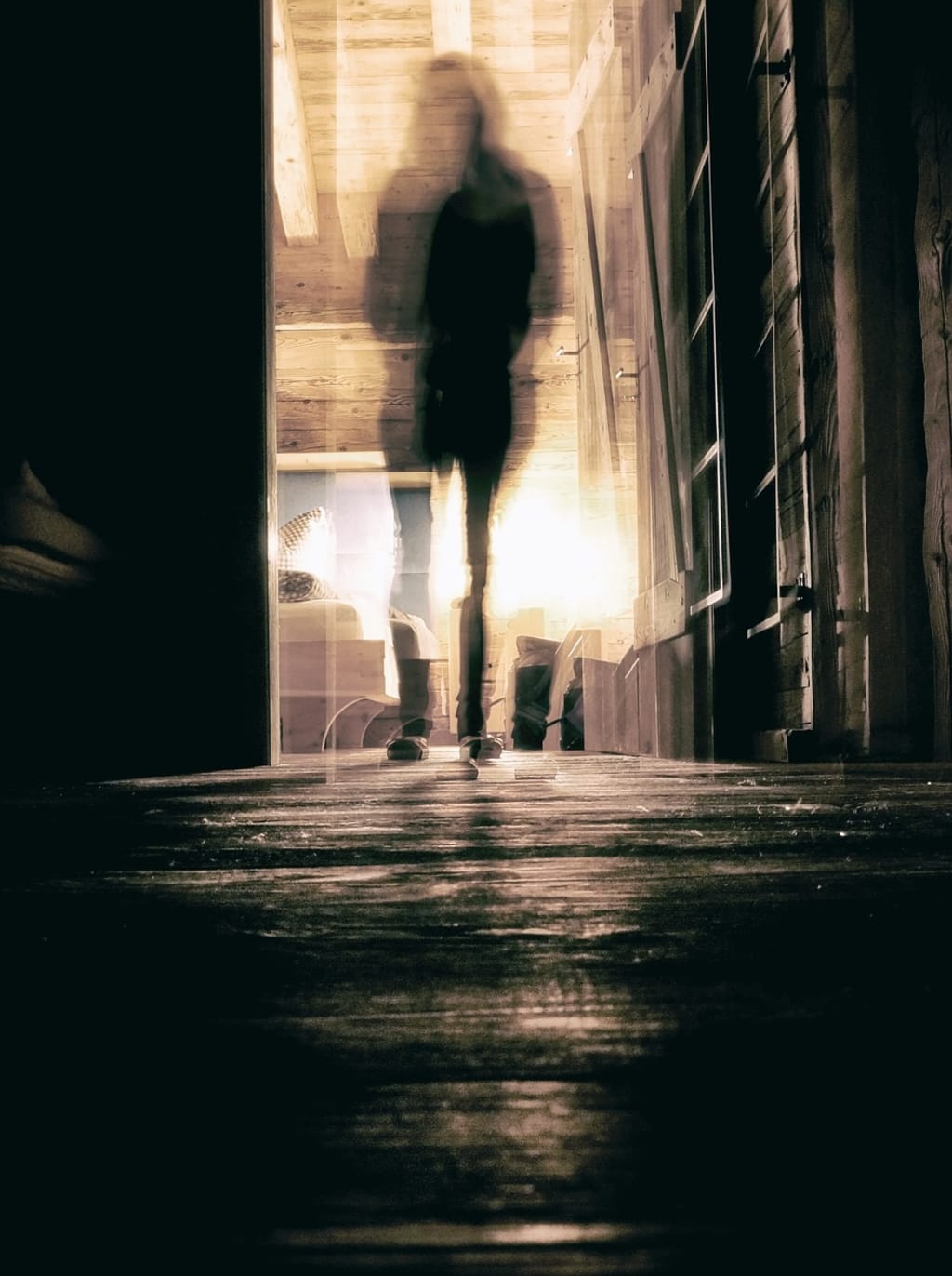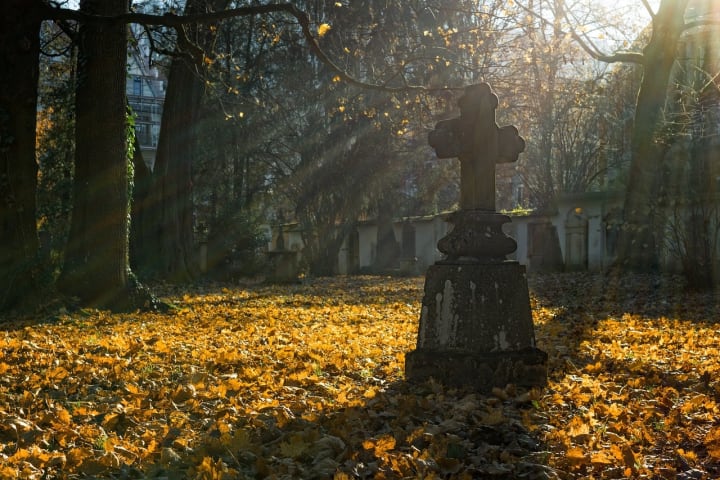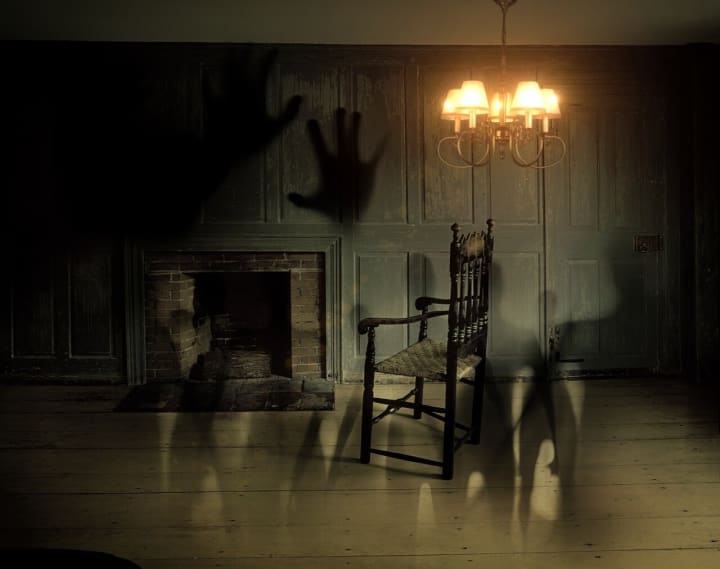
I write about the supernatural, so unsurprisingly, I spend a lot of time researching weird, wonderful and downright terrifying events. It’s one of the benefits of being based in the UK – if there’s one thing this country does well, it’s ghosts - so I have plenty of inspiring material to refer to.
Most spooky tales are relatively tame, and drifting grey ladies or grumpy monks seem to feature quite heavily in several. Every so often, however, I come across a story that unsettles me deeply, not least because it’s supposedly true.
Here are some of the most frightening hauntings reported to have happened in the UK. Disclaimer… you may not want to read late at night (I know I don’t!).
1. The Mackenzie Poltergeist

Greyfriars Kirk is a well-known tourist spot in Edinburgh. It’s famous for a few reasons – one being that it’s home of the grave of Thomas Ridell, which provided inspiration for the character of Lord Voldemort in the Harry Potter Books.
In this instance, it’s not the fictitious evil that’s interesting. The graveyard is also frequently called ‘the most haunted place on Earth’, and has one of the highest recorded incidents of poltergeist activity in the world.
The Black Mausoleum, situated far away from the main gates, is as eerie as the name suggests. It belongs to Sir George Mackenzie, who, back in the 17th century, was Lord Advocate for the city. During his lifetime, he relentlessly persecuted the Covenanters, which got him the ominous nickname of Bluidy Mackenzie. Turns out, this particular man was fond of torturing and killing his victims, who ironically, are buried close by.
Sir George Mackenzie rested easy in his grave until 1998, when things started to get strange. Seriously strange.
It was a wet and wild night, and a homeless man was desperately seeking somewhere to shelter from the bad weather. He broke into the Black Mausoleum, but rather than curling up and going to sleep, he started to study the coffins. Curiosity got the better of him, and he prised one open. Unfortunately for him, the floor suddenly collapsed beneath his feet, sending him tumbling into the pit below.
Now, falling into a pit on a dark, stormy night is bad enough. It’s even worse when the pit is full of corpses. Plague victims to be precise, that due to being sealed up so tightly, were still in the process of slow decomposition. Amazingly, the homeless man managed to clamber out. He ran from the graveyard screaming – and one can only imagine how traumatised he was afterwards.
That’s when the incidents started to happen. Only a couple of days later, a woman passing the Mausoleum said that she was forcibly shoved aside, ‘blasted back by a cold force’. Another lady was discovered lying unconscious by the Mausoleum steps. The marks on her neck suggested she’d been strangled, though thankfully she made a full recovery.
Edinburgh’s council were rattled - enough to seal up the Mausoleum, anyway. Regrettably, it didn’t stop whatever powers were at work within. There are literally hundreds of reports of people being assaulted when they venture too close to Sir George Mackenzie’s resting place – biting, kicking, burning, sickness and scratching, to name just a few.
It’s certainly a place worth visiting. But, as the resident volunteer guide testifies, it’s not a good idea walking the area late at night.
2. The Thornton Heath Poltergeist

Thornton Heath isn’t an immediately obvious place for a haunting. Situated in one of London’s suburban boroughs, by day, it’s about as non-spooky as you can get. However, in the 1970s, it set the scene for a shocking supernatural event.
One warm summer night in 1972, a family were fast asleep, until the radio suddenly switched itself on, blaring music at a deafening volume.
Not so strange, you might think. After all, electrical items do have a habit of malfunctioning from time to time. Presumably, the family thought so too. They certainly weren’t prepared for the four years that followed, and the misery of enduring ceaseless, unpleasant supernatural attacks.
One of the lampshades in the house continually fell to the floor, as though thrown there by an unseen hand. Close to Christmas in 1972, an ornament flew across the room, hitting the father on the head. He fell into the nearest armchair, reeling from the impact, just as the Christmas tree began to shake uncontrollably.
Things got worse. By New Year’s Eve, the family were hearing footsteps in one of the bedrooms. The son awoke one night to find a tall man looming over him, dressed in old-fashioned clothes. On another occasion, they were entertaining friends when the lounge door flew open and every single light in the house came on.
Unsurprisingly, the family were terrified, and asked a priest to come to the house and bless it. This didn’t solve the problem. They continued to experience poltergeist phenomena – objects whizzing from one end of the room to another, and loud, unexplained noises. A medium visited the property, and claimed that the ghostly activity was caused by an 18th century farmer, who used to live in the house and who considered the family to be trespassers.
Eventually, unable to cope with it anymore, the family moved away. The attacks stopped immediately and were never experienced again, despite the house having several other residents since.
3. Borley Rectory – the UK’s most haunted house

Few properties have such a rich, spooky history as Borley Rectory. The house was built in 1862 by Reverend Henry Dawson Ellis Bull; an elegant, gothic revival home for his large family. So far, so normal, right?
However, this particular spot had a history. The grounds of the rectory had once been the site of a Benedictine monastery, which had long since been demolished, and that monastery came with a rather tragic tale. According to popular legend, a monk fell in love with a nun from a neighbouring priory. They ran away together, but were caught. The monk was hanged, the nun imprisoned within a wall and left to die.
Presumably, Henry Bull had some knowledge of this, but it didn’t deter him from building his home there. Then, shortly after the family moved in, the strangeness started. Several visitors to the property reported seeing a ghostly nun, wandering the grounds. Many also saw her peering through the window whilst they were dining – so often that Bull actually bricked the window up!
Henry Bull passed away in 1892 and his son, Harry, took over the running of the house. His family continued to see the nun regularly, plus occasionally a monk accompanying her. Presumably, they all got used to it after a while, because the family never moved out.
Harry died in 1927, and the Reverend Guy Smith moved in with his wife. He didn’t stay for long, no doubt rattled by hearing repeated whispers and moans in the house, including one dislocated voice saying: “don’t Carlos, don’t”. Carlos was apparently the late Henry Bull’s nickname. The Smiths were also plagued with incessant doorbell ringing, pebbles being lobbed at them, eerie footsteps and flickering lights. They left the rectory after only two years.
The Reverend Lionel Foyster moved in next, with his wife and adopted daughter. It’s then that the supernatural activity really ramped up a notch. From the year 1930 to 1935, over a thousand poltergeist incidences were recorded in the property, including writing on the wall and strange pieces of paper that appeared out of the blue.
The wife, Marianne, even attempted to exorcise the house, and was thrown out of bed by an unseen force as punishment. Henry Price, a well-respected man in charge of investigating the events, commented: “Every person who has resided in the rectory since it was built in 1863, and virtually every person who has investigated the alleged miracles, has sworn to incidents that can only be described as paranormal.”
The rectory burnt down in 1939, after an accident with an overturned oil lamp. However, people continue to experience ghostly goings on in the ruins.
About the Creator
L.A Banks
Hello! I'm an experienced copywriter, published author (The Case of the Green-Dressed Ghost) and all-round film buff and music obsessive. If it's weird, you can guarantee I'll like it. Website: www.lucy-banks.co.uk






Comments
There are no comments for this story
Be the first to respond and start the conversation.